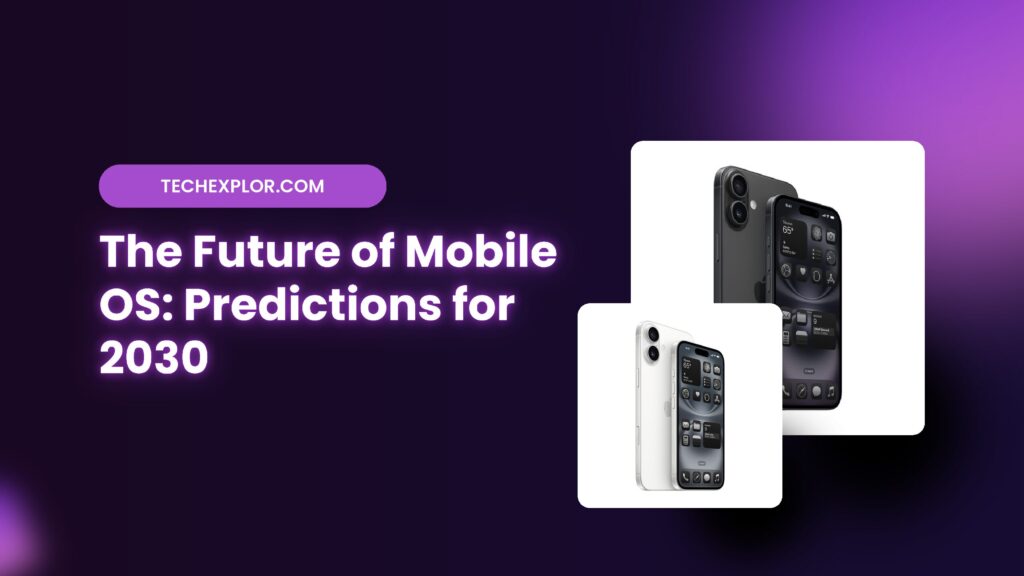Mobile operating systems (OS) have come a long way since the dawn of the smartphone era. As we look ahead to 2030, it’s clear that mobile OS development is on the brink of transformative change, driven by advancements in technology and evolving consumer expectations. Here, we delve into some key predictions for how mobile OS could evolve by the end of the decade.
1. AI-Powered Personalization
Artificial intelligence (AI) is set to become an integral part of mobile operating systems. By 2030, mobile OS will likely offer hyper-personalized experiences that adapt dynamically to individual users. From predictive keyboard suggestions to voice-activated smart assistants, AI will enhance productivity and streamline user interactions.
Imagine an OS that learns your daily routine and optimizes your device’s performance accordingly: suggesting apps based on the time of day, managing notifications intelligently, and even modifying settings automatically to fit your surroundings. AI-driven assistants like Siri, Alexa, and Google Assistant may evolve into more proactive and context-aware entities, capable of carrying out complex tasks with minimal input.
2. Seamless Integration Across Ecosystems
As digital ecosystems expand, mobile operating systems will increasingly prioritize seamless integration across devices and platforms. By 2030, your smartphone, laptop, smartwatch, and smart home devices will operate in perfect harmony.
Cross-platform OS features will blur the boundaries between device types. Features like Apple’s Handoff and Google’s Nearby Share hint at a future where users can effortlessly transition tasks across devices. For instance, you could begin editing a document on your phone during a commute and seamlessly continue on a desktop at work without any manual synchronization.
3. Rise of Open-Source and Decentralized Systems
The demand for greater transparency and control over personal data is driving a push toward open-source and decentralized mobile operating systems. By 2030, user-centric platforms emphasizing privacy and security could gain significant traction, offering alternatives to traditional closed systems like iOS and Android.
Blockchain technology might play a pivotal role here, powering secure app stores, decentralized identity verification, and tamper-proof systems for safeguarding personal data. These advances could empower users to control what data is collected, how it is used, and who has access to it.
4. Enhanced AR and VR Capabilities
Augmented reality (AR) and virtual reality (VR) are poised to redefine how we interact with the world—and our mobile OS will play a central role. By 2030, operating systems will be optimized for immersive experiences, enabling seamless use of AR glasses, VR headsets, and holographic displays.
Expect innovations like spatial computing, where your mobile OS integrates virtual elements into real-world environments. AR-powered OS functionalities could transform navigation, shopping, gaming, and communication. Imagine walking through a city with real-time AR navigation overlaid onto your surroundings or attending meetings as avatars in a VR environment—all orchestrated by a future-ready mobile OS.
5. Energy Efficiency and Sustainability
With climate change being a pressing global issue, the mobile industry will likely prioritize sustainability by 2030. Mobile operating systems will evolve to support more energy-efficient hardware and promote practices that reduce electronic waste.
Adaptive energy management systems within the OS could significantly prolong battery life by optimizing app usage, network connectivity, and background processes. Beyond devices, mobile OS might also integrate with broader sustainability goals, offering features that help users track and minimize their carbon footprints.
6. 5G and Beyond: New Connectivity Norms
The widespread rollout of 5G has already begun transforming the mobile landscape, and by 2030, we may see the emergence of 6G connectivity. Future mobile OS versions will be built to harness these ultra-fast networks, enabling instantaneous downloads, high-quality video streaming, and lag-free cloud gaming.
With advanced connectivity, OS developers will focus on cloud-centric operations. This could lead to “lightweight” devices where the majority of processing and storage occurs in the cloud, reducing the need for high-end hardware and lowering costs for consumers.
7. Modular and Customizable Interfaces
By 2030, the “one-size-fits-all” approach of traditional mobile OS may give way to modular and highly customizable interfaces. Users could have the freedom to tailor their OS experience by choosing from a library of components and features.
This level of customization might include personalized layouts, interchangeable system themes, and tailored functionality based on individual needs. Moreover, developers could leverage these modular platforms to create OS solutions for niche markets, such as gamers, creative professionals, and accessibility-focused user groups.
8. Focus on Health and Wellness
Mobile operating systems will increasingly integrate features to enhance health and wellness. Beyond tracking steps or monitoring sleep, future OS versions could incorporate advanced biometrics, mental health monitoring, and predictive analytics to prevent potential health issues.
For instance, an OS might detect irregular heart rhythms via connected wearables or identify signs of stress through voice analysis and suggest actionable steps, such as relaxation exercises or mindfulness activities.
Final Thoughts
The future of mobile operating systems is incredibly promising, with AI, AR, and sustainability at the forefront of innovation. By 2030, our mobile devices will likely become even more indispensable, functioning as personalized hubs for productivity, entertainment, and well-being.
While there are challenges ahead—such as data privacy concerns and the need for standardization across platforms—the rapid pace of technological evolution suggests that the possibilities are endless. As we inch closer to 2030, the question isn’t just how mobile OS will change but how these changes will redefine our digital lives.



